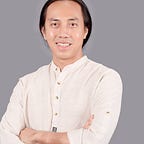“Ethic of Visual Story Telling” — An Interview with Photojournalist Thet Htoo
Nowadays in Myanmar there is a new generation of young and talented photographers with a lot of inspiration. Even though we are still far from having proper photography institutions and training facilities, I do believe we have a promising and exciting future for the Photographic Society in Myanmar. Burmese photographer and documentary filmmaker Thet Htoo has covered political, ethnical, social and environmental issues in Myanmar for many years, including sectarian unrest in Rakhine State.
What kind of ethical challenge is Myanmar’s photojournalism industry facing?
Most of the photojournalist in Myanmar do not understand the ethic as they become photojournalists followed by their hobby. But later they do learn about code of ethic seriously from senior as they want to become professional photojournalist.
As you know, ethic is easy to break. In your experience, what is the most challenging issue to break code of ethic?
I think eagerness to get the photo make the photojournalist to break the ethic, mostly.
What is your memorable story which challenge your code of ethic and why?
The challenge or my fear when I cover the story is I might not cover the full context of the story. We need to show the source of problem but it might weak in showing by pictures for what happened before. Another thing is getting bias unintentionally. Since land grabbing issue is one of the major problem in Myanmar, my most memorable story is about the victim family of land grabbing in Shan State, Myanmar. When we cover the story, we need to talk with people to understand what is really happening on the ground. For me, the human factor is key. When I cover this land grabbing story for LA times, I realized that I still do not understand how they are suffering.
Did you manage to put full context in your photos?
It’s really hard for fully understanding but I’ve tried my best to put myself in their shoes and show these suffer in my photos. I tried my best to get balanced and unbiased photos. I believe I am visually documenting the changes in a country that has been in the dark for decades. I am very excited to see the bigger picture that my work will bring after some time.
Did you manage to put your though from this story on your next projects?
Yes, I do because sometimes, we used to close our door of mind only with what we already know and we should not prejudged everything and should let our mind open as much as we can.
To get balanced story, what should we do? Why?
For instance, when covering racial crisis, what we see only infront of us might not cover everything. There may be the reasons before for happening the things we are seeing now. So, when I cover Rohingya crisis, I always try to explain what happened before in photo captions.
What is your most valuable code of ethic for everyday?
Fundamental code of ethic will be more or less the same in all kinds of journalism. To be accurate, to be true, not to be biased, and so on and so forth. For me, the most valuable code of ethic is not to misleading and prejudging.
How do you think of photojournalism ethics and how it has changed with the new media landscape?
We will have to keep advocating on photojournalism’s code of ethic.
— Kyaw Soe —
A journalist based in Myanmar.
Student of Diploma in Visual Journalism — The Asian Center for Journalism at the Ateneo de Manila University
